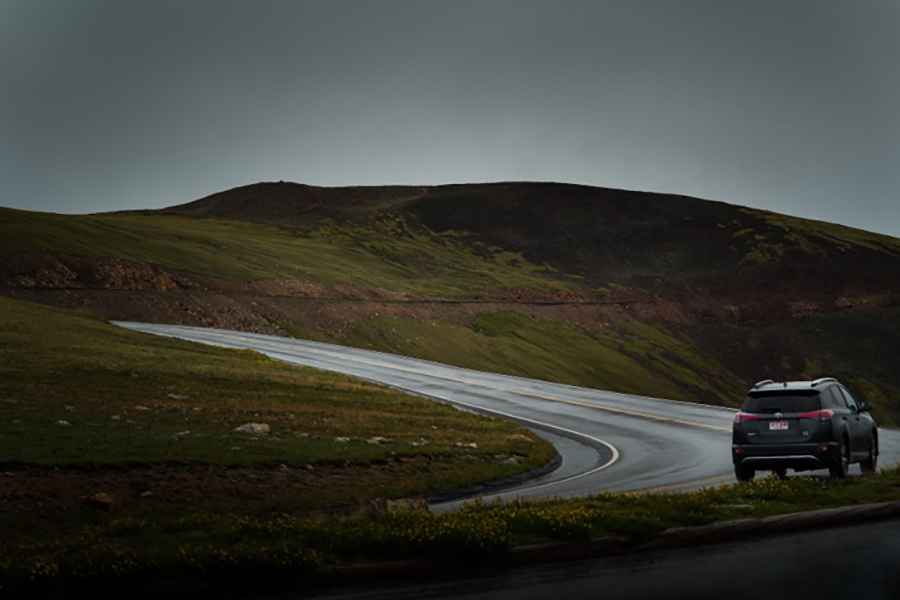Why some roads in the USA are more dangerous than others?
All over the country, locals talk about the danger of infamous roads in their areas. In actuality, many of the roads that we consider dangerous, such as the Million Dollar Highway in Colorado, the Moki Dugway in Utah, the Tail of the Dragon in Tennessee and North Carolina, and Going-to-the-Sun Road in Glacier National Park, are not the most dangerous of our roads.

This is partially because their notoriety makes people cautious when they drive them. It is also because these roads are typically in out-of-the-way places and don’t have a high number of cars on them.
Some of the most dangerous roads in the country are also the most well-known and busiest stretches on interstates such as I-95 through southern Florida, I-15 in Nevada, and I-10 in Texas and Louisiana. Many smaller stretches of interstate bypasses and transfers in busy cities are also very dangerous. Even more dangerous are the rural, two-lane highways which may claim more lives than any other type of road.
Here are the things that contribute to accidents and crashes in the US.
Road Hazards
Road hazards such as cracks, warped pavement, potholes, and washboards can cause accidents if drivers are unprepared or are going too fast. Severe road damage can cause tire blow-outs, leading to swerving, out-of-control vehicles, and accidents. Crashes can also occur when people swerve to avoid potholes and other road damage. In addition, road damage is very bad for vehicles, especially when it is unexpected and the driver doesn’t have time to prepare for or avoid it. For these reasons, municipalities and asphalt repair company are continually trying to repair and prevent damage on roadways.
Poor Signage
When drivers are confused about where they need to go or have to make last-minute changes because signs are confusing or missing, accidents can easily happen. This is especially common in areas where many drivers aren’t used to the area, such as interstates near interchanges or cities. In those places, many drivers are not local and aren't familiar with the lanes or roads. They are more likely to be looking at the signs rather than the road and are also more likely to make sudden lane changes or slow down quickly.
Weather
Poor weather is a major factor in accidents. Wet, slick, snowy, or foggy conditions can make it hard to drive safely. Wet roads can cause hydroplaning and decrease visibility. Snowy and slick roads increase the risk of accidents, make it impossible to slow down or stop quickly and make vehicles swerve or fishtail into other lanes. Snow can also create low- or no-visibility conditions. Fog and low visibility can cause massive multi-car pileups when the conditions came on suddenly or traffic failed to slow down sufficiently.
Speeding
Speeding is another of the major factors that contribute to accidents. Researchers estimate that speeding is a factor in about a third of fatal accidents in the US. Speeding decreases the amount of time people have to make decisions, such as moving out of another car’s way or changing lanes. When people are moving quickly, it leaves less time for other drivers to see them and to see where they are going or what they are doing. Speeding also makes it harder for people to stay in their own lane when they are going around curves,
Drunk Drivers
Drunk driving is illegal but still manages to contribute to 40% of traffic accident deaths. This means about 10,000-17,000 people are killed each year because of drunk driving. There are some roads and times that are more dangerous than others. For example, most drunk driving crashes happen at night, during the hours between midnight and dawn. They are also more common during the summer and over weekends. On holidays your risk of being hit by a drunk driver also increases. Holidays that are commonly “drinking” days, such as New Year’s Day and the Fourth of July are the worst days for drunk driving accidents.
Congestion
Busy roads, especially those that combine a lot of traffic with high speeds, are more likely to have dangerous or fatal accidents. Congestion and traffic can make it hard for offensive drivers to avoid accidents, and make it more likely that there will be someone on the road who is speeding or drunk. Drivers who can avoid congested roads or busy times of day will be safer overall.
Curves and Narrow Lanes
Two-lane highways with curves and narrow lanes contribute to around half of the fatal accidents in the country. These roads are found all over the country and are usually old highways that were built for smaller vehicles, less traffic, and slower speeds. Today, they just aren’t made for the conditions we drive under. These roads exacerbate other problems, like speeding, drunk driving, and bad weather, making it harder to avoid accidents because there is a much smaller margin of error.
Drop-offs
While drop-offs are dangerous and scary, they don’t cause as many fatal accidents as most of the other contributors on this list. In fact, people are more likely to slow down and pay more attention when driving on roads that look scary, making them less likely to get in a wreck. However, many roads with drop-offs are also located in areas with a lot of curves, and hills, and have narrow lanes, making them tricky to maneuver. In addition, most of these roads are found in mountains and other areas where bad weather is common. For these reasons, roads with drop-offs deserve a place on this list.